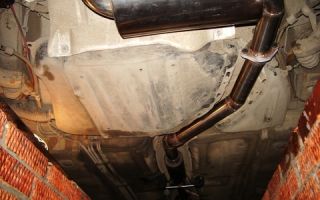11 Replacing the catalyst with a flame arrester. Killing error 0420 - logbook Toyota Corolla Compact Pedestal 2001 on DRIVE2
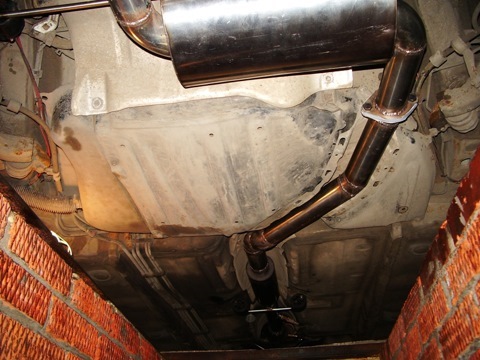
They drove my car from Lausanne, Switzerland to Russia. The mileage was 93.2 thousand (thousand kilometers). I drove and drove, filling up with 95 gasoline. About 9 months passed, the mileage on the odometer became 103.8 thousand, and then the first “Jackie Chan” or “meat grinder” in my life came on (the upper left red icon):
What to do?
After the Niva 1600 of the 85th year of production, I didn’t really know which way to approach the foreign car, I didn’t have any tools... I went to the service center, paid 0.8 thousand (THUSAND RUR) and was “delighted” with the error P0420 “ineffective operation of the catalyst.” Again The question remains - what to do? At the service center they said that the exhaust gas catalytic converter can be stuffed.
Only they don’t do this - there are specialized exhaust services. I started searching. The original khat cost 13 thousand at a dollar exchange rate of about 23 and kopecks. And then the price rose to 20 thousand, I didn’t want to give away almost half my salary for the sake of something unknown, because... gasoline 4-5 years ago was clearly not of European quality.
And with bad gasoline, it’s easy to fill up a new cat, not just in nine months—one refueling is enough. There were no duplicates, only if the grinder was welding. With stuffing, it’s also not so simple: behind the khat there is a second lambda (oxygen sensor), which is responsible for monitoring the chemical state of the khat.
Chemical - because the khat can melt or the honeycomb will break on bumps from the impact - there will be a physical state of “non-standing”. Lambda is therefore solely responsible for chemistry, i.e. the salts of precious metals work together, and the honeycombs are not clogged, not broken, and as a result there is an error and “Jackie Chan”. Signals from the lambda enter the ECU, which in Toyota is not easy to deceive with electronic gadgets.
As of 2008, I have not found a single report on a really working electronic decoy. Judging by the forums, there were, of course, attempts to make one, but the machine’s brain wasn’t ready for it. But I didn’t want to knock out the card and drive the car in service mode.
Ultimately, after another 9 months of searching and thinking, I found the guys who digested a can of khat for me from another Toyota. The khat honeycomb from the donor was relatively new, stamps were visible. According to the servicemen, they removed the tire from the car that was injured in the accident.
These nine months I reset the P0420 error in a tedious way: I pulled the hood lever under the steering wheel; went outside; wore cotton gloves (since those times, the habit of having gloves in the door drawer has remained); raised the hood; in the fuse block I took out the EFI fuse for a few seconds, for which I even drilled it and tied a string (collective farm tuning straight) so that it would be convenient to pull it out all the time:
The error did not reset for long, from several tens of kilometers to several hundred (it happened once when I was driving along the highway).
This meat grinder really made me angry, but the toad tormented me no less. They cut off my old cut at Glushak service: They left me from the donor: I paid 10 grand for everything. Well, I think we can sleep peacefully now – the mileage is 114.5k – we have a long and happy life ahead.
A couple of weeks later I installed a Multitronics on-board computer to check for errors if anything happened. A happy life without Jackie Chan didn’t turn out to be too long, I don’t remember now - I didn’t record it anywhere, but within a year.
The cartoon came in handy here - the error could be reset right at a traffic light - I turned off the engine, turned on the ignition, waited a little, reset the error, started up and drove off. But... it didn’t reset for long either! And again, this Jackie Chan was not childish!
draw the letter X on a piece of paper in the entire sheet) I spent 10 thousand?! And what are the future prospects?! To dump 10 thousand every year for the sake of the environment (which is extremely doubtful with our quality of gasoline) and weld in a new cat?! Well, no!
After reading again about Toyota ECUs, I realized that soldering a resistor and a transistor into the wires of the second lambda will not solve the meat grinder problem. Just like when screwing in ordinary spacers under the lambda. People still made mistakes. Although this message was recently noticed.
And then I found what I was looking for. It was a mini-catalyst. The issue price is 2.5 thousand. The idea is very original, namely: who needs a catalyst in a car? Second lambda - so you get yourself a mini-catalyst. And no one needs the main cat (at least for me for that kind of money with such a resource). And I bought it.
Here he is my savior: I screwed the minicat under the second lambda, from the experience of cutting out my first cat I understood that the honeycombs were in order and the cat was physically intact, but chemically it was not, the salts of precious metals were again blown away in a very well-known direction.
Therefore, the catalyst simply remained standing in place and extinguished the exhaust, but did not burn out the poisonous gases:
The only drawback is that the lambda began to rest against the car body. It would be possible to look for a shorter lambda probe, but I didn’t bother. Or rather, I did, but not by replacing the DC with a shorter one, but like this: Kolkhoz-tuning 2.
0 - the past is telling - in the dashing nineties I was a farmer, and this is almost like a collective farmer. I myself understood that the lambda wires would last for a long time, so I again began to look for information on stuffing khat. The mini-catalyst coped with its duties with a bang to rub the points into the second lambda. In terms of price-quality ratio, it turned out that it was better to install a flame arrester.
This is what I did almost 2 years ago. The mileage was already 168.1 thousand. Here’s a flame arrester like this, and for the lambda with minicat we welded a fitting at an angle so that this whole structure would not rest against or rub against the bottom of the car:
The flame arrester itself cost 2 rubles, the work to install it cost one and a half rubles and another 0.8 for the DC fitting.
At Glushak service, when they welded the flame arrester, they said that even though it was made of stainless steel, in a few years it could burn out at the junction. H.z. – we’ll wait and see – so far so good.
This is what it looked like after six months of operation and a mileage of 11.2 thousand: And this is after a year and a half and 44 thousand:
Well, the last photo is what the flame arrester looked like after a trip on the grass (even the braid on the lambda was frayed).
At the time of the photo, it had been standing for a year and 9 months and 52 thousand: At the moment, the mini-catalyst has completed 70 thousand and works flawlessly, according to the “set it and forget it” principle.
I also recommend killing P0420.ZYIf someone says, “Well, what about the environment? Are you polluting the atmosphere?” I’ll answer right away: “my dears, which of you are so green and flat ALWAYS waste batteries, energy-saving lamps, etc. items to a recycling and disposal center, and not just feed them into the trash can, as my daughter says?” Exactly. Foreigners are asked not to answer this question - we know, they swam... I bought a platinum mini-catalyst from the company on the first link - they were located in the north of Moscow - it was not far to go to them:
The price of the issue includes all amounts for revealing the topic, and getting rid of the cat and the error is only 6.8...
Chetverik, 4 Ramkhat, Summer 7521
Issue price: 17,600 ₽ Mileage: 103,800 km
Source: https://www.drive2.ru/l/84062/
COROLLA. SOLVING THE PROBLEM WITH THE CATALYST
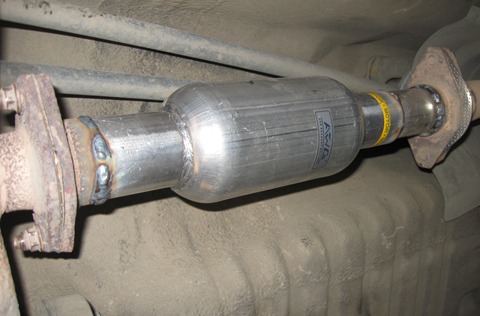 Want to create a site? Find Free WordPress Themes and plugins. Promotion! When ordering the service of replacing the catalyst with a turnkey flame arrester, a 50% discount on the electronic decoy of the lambda probe is provided.
Want to create a site? Find Free WordPress Themes and plugins. Promotion! When ordering the service of replacing the catalyst with a turnkey flame arrester, a 50% discount on the electronic decoy of the lambda probe is provided.
×Typical symptoms of a malfunction on a Toyota Corolla:
- reduction in engine power (deterioration in acceleration dynamics, decrease in maximum speed) coupled with increased fuel consumption
- Difficulty starting the internal combustion engine (it took longer to start)
- strong toxic odor from the exhaust system
- Extraneous noises are heard from the catalyst (ringing, rattling)
- diagnostics shows with corresponding errors indicating ineffective operation
If there is any suspicion of incorrect operation, come and we will carry out a free diagnosis. If necessary, we will make the necessary repairs.
We offer the most reliable option - replacing the catalyst with a high-quality factory-made flame arrester (see pictures) made of two-layer stainless steel with the installation of a controller for adjusting the readings of a lambda probe (blende) of our own production.
Rice. 1
Rice. 2
Rice. 3
There is a misconception that after removing the catalyst and replacing it with a flame arrester, the Corolla will run louder, no matter what flame arrester is installed.
The latest generation of flame arresters work as quietly as catalysts, and sometimes even quieter if two or three reflective, cooling and noise-absorbing chambers are made inside, and 2-3 types of packing are used to dampen noise, temperature and pressure.
The highest quality stuffing is made of stainless wire and Kevlar: it is not afraid of high temperatures and, due to its strength, is not blown out. It absorbs noise three times better than basalt (the most common). Products with such packing cool exhaust gases better than their counterparts, and last 10 times longer.
Comment. We do not replace universal catalysts for Toyota Corolla E12 E11 due to their unsuitability for our gasoline, coupled with low quality workmanship by manufacturers for the sake of low prices (mainly China).
All of the above operations are performed for all generations of the model and versions intended for any country:
Axio: 1.5i, 1.8i
300N/MC: 1.3i, 1.4 D-4D, 1.4i, 1.6i, 1.6i AT, 1.8i, 2.0 D-4D
Verso: 1.5 i, 1.6 i, 1.8 VVT-i, 1.8 VVT-i MMT, 2.0 D-4D, 2.2 D-4D, 2.2 D-CAT
Fielder II: 1.5 i, 1.5i 4WD, 1.8i, 1.8i 4WD
(E12): 1.3i, 1.4 D-4D, 1.4 i 16V , 1.5i, 1.6i, 1.8i, 2.
0 D-4D
Hatch (E12): 1.4 D-4D, 1.4i, 1.6i, 1.8i T-Sport, 2.0 D-4D
Wagon (E12): 1.4 D-4D, 1.4 i 16V, 1.6 i 16V, 2.0 D -4D
Fielder I: 1.5i, 1.5i 4WD, 1.8i, 1.8i 4WD, 2.2d
Spacio (E12): 1.5;
Runx: 1.5i, 1.8i E11: 1.3, 1.6, 1.8i, 2.0 D
Compact: 1.4, 1.
6
Compact (E11): 1.4, 1.4i, 1.6, 1.6 Auto., 2.0 D
Hatch (E11): 1.3 i 16V, 1.6 i 16V, 2.0 D
Wagon (E11): 1.3 i 16V, 1.6 i 16V, 1.8 i 16V 4WD, 2.0 D
Levin (AE110, AE111): 1.5i, 1.6i
Spacio (E11): 1.6i, 1.8i
E10: 1.3 XLI, 1.3 XLI 16V, 1.6 Si, 2.
0 D
Compact (E10): 1.3 i 16V XLi, 1.4 i 16V XLi, 1.6 i 16V Si, 2.0 D XL
Hatch (E10): 1.4 i 16V XLi, 1.6 i 16V GLi, 2.0 D XL
Wagon (E10): 1.3 i XLI, 1.3 i XLI 16V, 2.0 D
Ceres: 1.5 i, 1.6 i
Levin (AE100, AE101): 1.5i, 1.6i, 1.6T
(E9): 1.3, 1.3 i, 1.6, 1.
8 D
Compact (E9): 1.3, 1.3 i, 1.6, 1.6 GTi, 1.8 D
Hatch (E9): 1.3, 1.3 i, 1.6, 1.6 GTi, 1.8 D
Wagon (E9): 1.3, 1.3 i, 1.6 XLI, 1.6 XLI 4×4, 1.8 D
Levin (AE91, AE92): 1.5i, 1.6i
E8: 1.3, 1.6, 1.8 D
Coupe (E8C): 1.6 16V, 1.
6 GT 16V
FX Compact (E8B): 1.3, 1.6 GT 16V, 1.8 D
Hatch (E8): 1.3, 1.6, 1.8 D
Levin (AE85, AE86): 1.5i, 1.6i
E7: 1.3, 1.6, 1.8 D
Hatch ( E7): 1.3, 1.6, 1.6 GT, 1.8 D
Wagon (E7): 1.3, 1.8 D
Hatch (KE,TE): 1.2, 1.
6
Coupe (KE): 1.2
KE: 1.2
Rumion :1.5i, 1.8i, 1.8i 4WD
and subsequent ones (unless an exception is specified).
1991 1992 1993 1994 1995 1996 1997 1998 1999 2000 2001 2002 2003 2004 2005 2006 2007 2008 2009 2010 2011 2012 2013
Did you find apk for android? You can find new Free Android Games and apps.
Source: http://www.exhaust-service.ru/toyota/corolla/catalizator/
Toyota Corolla Forum
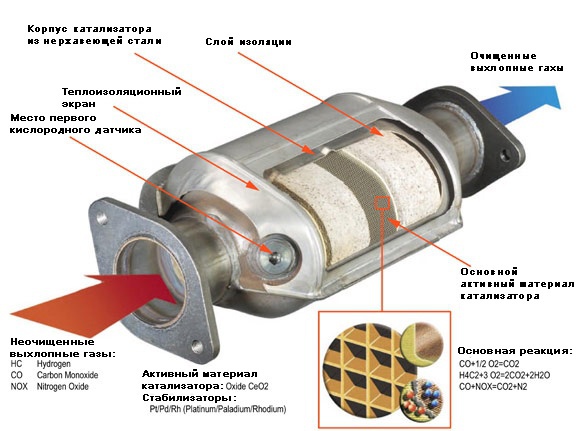
Engine operation (and everything on it), problems, repairs and spare parts
Mikhail Ryabov Messages: 2 Registered: March 19, 2014, 18:04 Car: Toyota Corolla 2008, engine 1.6 manual transmission
#1
Post by Mikhail Ryabov » April 07, 2014, 11:50
Corolla 150 2008
1.6l manual. The check light came on, the diagnostics said error code 402 - catalyst malfunction (clogged), I found out the price for it was ah..l from 27 to 70 tr. I looked on the internet for its service life of 150 thousand km. Please tell me who has encountered this and what advice you can give me regarding this problem????????????
andromeda1973 Messages: 164 Registered: Nov 26, 2013, 6:07 pm Car: Toyota Corolla E 150.1NR-Fe.1.33, mileage 164,000, 2012. Location: Tavda, Sverdlovsk region
#2
Post by andromeda1973 » Apr 07, 2014 12:08 pm
What's the mileage of the car?
The purest joy is the schadenfreude we feel when observing the misfortunes of those we envy...
111Ivan Honorary King Messages: 791 Registered: April 4, 2013, 21:44 Car: Toyota Corolla 2008. Manual transmission Location: Borisoglebsk Thanked: 5 times Thanked: 25 times
#3
Message 111Ivan » April 7, 2014, 12:40
Most likely, punching a hole will destroy this catalyst honeycomb. I haven't heard of anything that can be cleaned or burned. I just don’t know how the Lambda probe will behave.
Last edited by 111Ivan on Apr 09, 2014, 09:32 pm, edited 1 time in total. 111Ivan Honorable Korollovod Messages: 791 Registered: Apr 04, 2013, 09:44 pm Car: Toyota Corolla 2008 onwards. Manual transmission Location: Borisoglebsk Thanked: 5 times Thanked: 25 times
#5
Message 111Ivan » April 7, 2014, 12:53
There are 2 Lambda probes in front of the catalyst and after which of the sensors showed an error? Maybe the Lambda probe itself is simply “poisoned”; just replace it with a new one. when the catalyst is clogged, the car's traction disappears. Andrey Sedukhin Messages: 129 Registered: May 10, 2013, 2:21 pm Car: Toyota Corolla (140/150) 2007 Thanked: 4 times Thanked: 1 time
#6
Post by Andrey Sedukhin » April 07, 2014, 16:19
Good evening! Before the Corolla, I had a Lancer9 and so the catalyst is almost problem No. 1 after 120-150 thousand km, especially since there are already 2 of them and the cost of one is about 35 thousand rubles. I knocked out the first one, I simply cut the second one after the lambda and welded a thick pipe. There was no unnecessary ringing. And it passed the inspection the first time.
But as soon as you knock out the cards, the 2nd lambda will generate an error. They either install a mechanical snag, this is some kind of attachment for the 2nd lambda probe, or if they spend a lot of money on it. But I made it simpler by soldering a resistor and a non-polar capacitor into one of the connections between the lambdas and everything is OK.
Moreover, the cost of the first thing was as much as 25 rubles and the second 20 rubles!!! I did everything according to the photo report, there were no problems. But I haven’t thought about how to do this on a Corolla yet, but I think the principle is the same (cut the cat, weld a pipe with thick walls so that there are no unnecessary sounds, solder the resistance, the main thing is to know which wire and with what capacity.
If the photo report is useful, it is here.
http://faq.lancer-club.ru/Deception_of_the_controlling_oxygen_sensor In the Lancer 9 section, do-it-yourself repairs.
Only a small correction to the report is that you need to put a resistor not at 120 kOhm but at 360 kOhm. With this, it will never give such errors again.
Maybe you can come up with something similar for the Corolla 150. But I think the principle is the same, only there are fewer catalysts.
111Ivan Honorary King Messages: 791 Registered: April 4, 2013, 21:44 Car: Toyota Corolla 2008. Manual transmission Location: Borisoglebsk Thanked: 5 times Thanked: 25 times
#7
Message 111Ivan » April 8, 2014, 5:50 pm
Write something down or not so that people know “where to run and what to take.” Dyusha Honorary Corolla Messages: 11430 Registered: March 30, 2013, 1:53 pm Car: Corolla, 2011, 4 automatic transmission, 1.6 l petrol diesel, Comfort+ , drank more than 9700 l/Ai92, Toebta 0W20 Location: 133, Kovrov Thanked: 7 times Thanked: 24 times
#8
Post by Dyusha » 08 Apr 2014, 19:24
You have some kind of rock, all cars have problems with katas. Maybe the gasoline is not quite suitable or the mileage is very short? First, it is better to determine the serviceability of the second lambda, the performance of the first, whether it is sluggish.
What are the fuel consumption limits?
Further, if the second one is still dead, definitely replace it. If it's alive, remove and cut the top of the cat, you may have to throw out one section, you need to look at the location.
There are a lot of photos of melted skates, look on the internet and compare.
How does the engine run in general? How long does it take to accelerate to hundreds, for example?
If you throw out the second sensor. then you can put a decoy, there are all sorts of them on the internet.
Andrey Sedukhin Messages: 129 Registered: May 10, 2013, 2:21 pm Car: Toyota Corolla (140/150) 2007 Thanked: 4 times Thanked: 1 time
#9
Post by Andrey Sedukhin » April 08, 2014, 21:30
Which second sensor should I throw away?
(automatically get not flashing) You need to try to screw up the sensor, usually it’s not the sensors, but the fact that the catalyst is not the first freshness (mainly due to the fact that they refueled with crappy gasoline or 92, although the book says that you need to fill in 95+) By saving on one, you end up with another.
To install the snag, you need both sensors to be alive. And you don't need to cut anything. Or knock out all the insides or weld the pipe. Well, if there’s no kata at all, and that’s right, it’s a flame arrester. The main condition is that the second lambda is in place and the first lambda reads the information.
By the way, without a catalyst, power increases. Well, at least the car breathes freely.111Ivan Honorary Korollov Messages: 791 Registered: April 4, 2013, 21:44 Car: Toyota Corolla 2008 onwards. Manual transmission Location: Borisoglebsk Thanked: 5 times Thanked: 25 times
#10
Post 111Ivan » April 9, 2014, 1:08 pm
[quote=”Andrey Sedukhin”] although the book says that you need to fill in 95+) [/quot
Where in Russia they sell pure Au 95. Basically Au 92 and all or most of it is brought up to 95 with additives. And you won’t understand what kind of gasoline you are pouring.
St88 Honorary Korollov Messages: 1803 Registered: May 13, 2013, 12:57 Car: Toyota Corolla 2013, manual transmission, comfort +, sedan, white. Location: Tagan Thanked: 1 time Thanked: 1 time
#11
Post by St88 » Apr 09, 2014, 01:25 pm
at Gazprom 95 is clean.
“”noname:
I don’t understand – is it a 2-stroke jerker? Cylinders 1 and 4, 2 and 3 operate in one stroke. “”
Studying Honorary Corolla Breeder Messages: 6829 Registered: Jan 21, 2014, 7:09 pm Car: Toyota Corolla E 150. 2008
Mechanics. 130 t.km. Location: St. Petersburg
#13
Post Studying » 09 Apr 2014, 13:31
No need for all of Russia. Our Kirishi (cooks) is worthy of 95. The norm is 95.0 and the actual is 95.6.
Take care of your health from a young age!
exxittusHonorary Corolla Messages: 4555 Registered: Jan 18, 2013, 03:46 pm Car: Corolla,2010,6MT 132hp/1ZR-FAE/Valvematic
Avensis,2002, 2L/149hp/1AZ-FSE(D4) Location : Cologne, German Thanked: 7 times
#14
Post by exxittus » 09 Apr 2014, 13:54
Confirmed(du)zhu.Avichka 200tkm hawala gasoline from Baden-Wurth. The last 15 thousand km on the St. Petersburg diet: luka, Gazprom, Neste, Kirishi. He doesn’t complain. He filled the AI-92 tank once. The butt didn’t rattle, but I drank it quickly and I realized that I was wrong.
Only AI-95!
Studying Honorary Corolla Breeder Messages: 6829 Registered: Jan 21, 2014, 7:09 pm Car: Toyota Corolla E 150. 2008
Mechanics. 130 t.km. Location: St. Petersburg
#15
Post Studying » 09 Apr 2014, 14:01
What the catalyst is most afraid of is the impact of falls. Maybe the jamb was damaged at the factory. Accidents also have an impact. And the driving style itself, oil, gasoline, long-term work at XX.
Take care of your health from a young age!
111Ivan Honorary King Messages: 791 Registered: April 4, 2013, 21:44 Car: Toyota Corolla 2008. Manual transmission Location: Borisoglebsk Thanked: 5 times Thanked: 25 times
#16
Post 111Ivan » April 9, 2014, 2:19 pm
And naf...I’ll buy a candle factory and look for an engine using paraffin. Sedukhin Andrey Messages: 129 Registered: May 10, 2013, 14:21 Car: Toyota Corolla (140/150) 2007 Thanked: 4 times Thanked: 1 time
#17
Post by Andrey Sedukhin » April 09, 2014, 20:29
By the way, I heard that the catalyst supposedly fails due to oil consumption. As for gasoline, it’s different everywhere. I don’t pour 92 at all. Just because of the catalysts. As I wrote above on the 9th Lancer.
Where I live there is either Rosneft or Slavneft. For example, on 95 and 98 Slavneft everything is OK, but from Rosneft the fingers are knocking no matter what is poured. And no matter how many times I refuel the same thing.
And if I’m driving on the highway only 95 Lukoil, the car flies on it. And the consumption is less.
111Ivan Honorary King Messages: 791 Registered: April 4, 2013, 21:44 Car: Toyota Corolla 2008. Manual transmission Location: Borisoglebsk Thanked: 5 times Thanked: 25 times
#18
Message 111Ivan » April 9, 2014, 21:45
Export motor gasoline AI-80 and AI-92 Ryazan region, village. Nikulichi, LLC "LUKOIL-Volganefteprodukt" Export of products Iran, Greece, Turkey and Yugoslavia
There are two factories in the area, where can I find AI 95? To the Volgograd region. When you stop there you can refuel, but everything else sucks. The gas station is like a “horse” but there’s no point in it 0
Studying Honorary Corolla Breeder Messages: 6829 Registered: Jan 21, 2014, 7:09 pm Car: Toyota Corolla E 150. 2008
Mechanics. 130 t.km. Location: St. Petersburg
#19
Post Studying » 09 Apr 2014, 22:11
Yes, there are decent catalysts for disassembly.
The price in St. Petersburg is 7650, I’m thinking about how to install the decoys and cut the cat.
Take care of your health from a young age!
Studying Honorary Corolla Breeder Messages: 6829 Registered: Jan 21, 2014, 7:09 pm Car: Toyota Corolla E 150. 2008
Mechanics. 130 t.km. Location: St. Petersburg
#20
Post Studying » 09 Apr 2014, 22:18
Yes, and there’s nothing to be done!!!
Take care of your health from a young age!
Go
Source: http://tc-club.ru/viewtopic.php?t=1545
Repair and replacement of Toyota catalyst
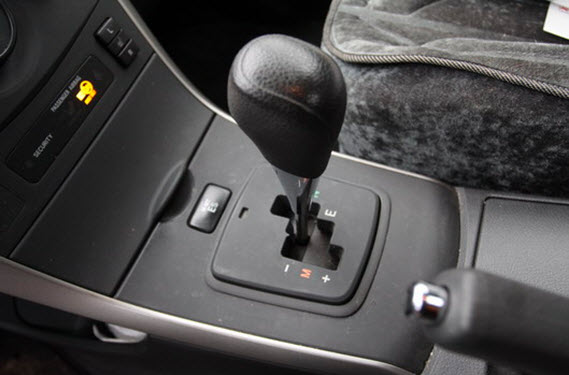
Specialists from AUTOPLUS-MSK technical centers will perform any work on repairing Toyota mufflers. We accept any petrol models Land Cruiser Prado, RAV 4, Highlander, Corolla, Camry, Venza, Avensis, Prius, Yaris, etc.
The main list of services includes
- replacing the catalyst with a flame arrester (Mg-Race, FOX, AWG) with electronic and mechanical decoys of lambda probes;
- clearing errors CHECK ENGINE P0420 – P0430;
- installation of universal catalytic converters (Eberspacher, JMJ, etc.);
- replacement of oxygen sensors and muffler corrugations (Bosal, JP);
- muffler diagnostics;
- welding work on the exhaust system - pipe routing, etc.
Most often people contact us about replacing catalysts (error P0420 - P0430). The price of new spare parts is quite high. Therefore, we offer the following two alternative repair options.
The simplest is the use of universal analogues. For almost all Toyota models, you can choose a universal model made by Eberspacher, Bosal or Ferroz. Their lower cost is not due to quality, but to a slightly different design.
By purchasing an original part, you purchase almost half of the exhaust system, since the kit usually includes exhaust pipes and corrugations.
A universal catalyst is a body made of alloy steel with a carrier on which a layer of precious metals (Pt, Pd, Ru, Rh) is fixed.
Another alternative is to remove the catalyst and install a flame arrester. For stable engine operation in the absence of a converter, it is necessary to additionally install catalyst emulators - decoys on the second lambda sensors. All this can be done in our service center, which has been specializing in the repair of foreign car mufflers for several years.
The catalytic converter in Toyota diesel vehicles is almost always located in the same housing as the particulate filter.
If errors appear on the particulate filter when the car has driven more than 100 thousand kilometers, then regeneration and washing will not help.
The filter is already a lump of soot on a ceramic sieve, which is easier to remove by removing the regeneration mode from the program block. Below are some examples of such work.
Removing the diesel particulate filter for Toyota Corolla
Photo 1
Photo 2
Photos 3 – 4 show the replacement of the Toyota Corolla E120 1.6 catalyst with a flame arrester. Year of manufacture of the car: 2004
More details
Photo 5
Photo 6
Photos 7 – 10 show replacement of Toyota 4 Ranner catalysts with flame arresters
Photo 7
Photo 8
Photo 9
Photo 10
Source: http://www.autoplus-msk.ru/toyota
Removing a Toyota catalyst - installing a flame arrester and replacing the muffler corrugation on a Toyota
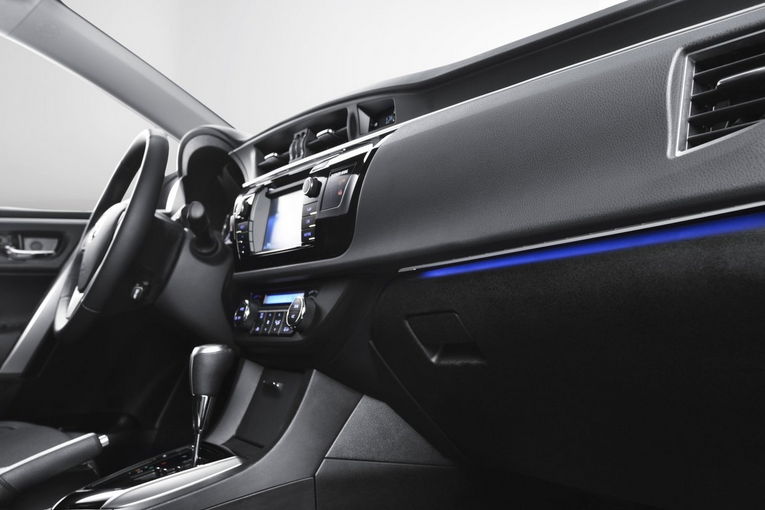
Removing the Toyota catalyst and installing a flame arrester in its place is inevitable if you have been refueling with low-quality fuel (gasoline or diesel) for a long time.
From experience, we know that the catalyst on Toyota fails for the following reasons:
- Low-quality fuel : it doesn’t matter what you refuel with - gasoline or diesel fuel
- Total mileage and year of manufacture of the car : the older your Toyota is, the greater the chances of a breakdown - clogging of the converter
- The ignition system is not functioning correctly : the spark plugs are leaking
- Oil from the internal combustion engine enters the catalyst
Prices for removing the catalyst, installing a flame arrester and repairing corrugation on Toyota (Toyota):
- Removing the catalyst, installing a flame arrester in the catalyst housing on Toyota - 15,000 rubles for 2 pieces
- Electronic decoys (controllers) – 6,000 rubles for 2 pieces
- Replacing the muffler corrugation on a turnkey basis – 3,000 rubles
Removing the catalyst Land Cruiser Prado 120 (Land Cruiser Prado)
- Removal of catalysts and installation of flame arresters – 14,000 rubles for 2 pieces
- Mechanical blendes – 2,000 rubles for 2 pieces
- Electronic controllers – 6,000 rubles for 2 pieces
All used parts and labor are guaranteed for 3 years!
Replacing a Toyota catalyst with a flame arrester
The catalyst is an integral part of the exhaust pipe through which the products of fuel combustion pass and are partially retained, react, and are decomposed to acceptable limit concentrations in the air.
Experts say that exhaust gases pollute the surrounding air and provoke the formation of smog, which is why the developers of modern Toyota cars install catalysts at the outlet of the exhaust pipe. Catalyst repair comes down to replacing the filter layer, which over time ceases to capture a significant part of the harmful combustion products.
When this occurs, the corresponding “CHECK” malfunction sign lights up on the instrument panel, which notifies you that it is time to replace the catalyst.
The fact is that the filter component is a layer of platinum-iridium alloy, the resource of which is approximately 100 thousand km. After the car has covered this mileage, the catalyst becomes ineffective.
The resource is significantly reduced when using low-quality fuel, a malfunction of the ignition system and mixture formation.
At specialized service stations they offer a budget option - a universal catalyst or flame arrester.
We repair the exhaust system of Toyota cars:
- Auris - Auris
- Camry – Camry
- Avensis - Avensis
- Corolla – Corolla
- Fortuner – Fortuner
- Highlander – Highlander
- Hilux – Hiliks
- Land Cruiser – Land Cruiser
- Land Cruiser Prado – Land Cruiser Prado
- RAV 4 – RAV 4
- Celica _
- Matrix – Matrix
- Yaris – Yaris
- Tundra - tundra
- Sienna – Sienna
- 4Runner – 4 Runner
Catalyst repair for Toyota: photo at SVS car service center
Toyota flame arrester installation
A flame arrester is an excellent alternative to a catalytic converter, but a flame arrester is not designed to filter exhaust gases from harmful components like a catalytic converter does. The flame arrester merely “evens out” the flow of exhaust gases, reducing the noise level.
Replacing Toyota corrugation
When a Toyota corrugation wears out and fails, the car makes a very loud noise, as if the exhaust pipe had burned out. The problem with replacing the corrugation is that it is part of the exhaust system of a Toyota car and cannot be easily removed. You need to resort to radical measures - cutting with a grinder.
After the corrugation has been cut, a new one can be welded with a welding machine and the entire exhaust system can be put back in its original place. If the work is not performed at a specialized technical station. service, where there is a lift and not in the “pit”, for convenience the front end needs to be raised a little.
After replacing the Toyota corrugation, the noise level and oil consumption will decrease significantly, and the car will start working like a clock.
Toyota muffler repair
In most cases, the muffler is repaired or replaced when it burns out. The driver becomes aware of this when the car makes an incredibly loud noise while driving.
Loud operation may indicate other faults, but most often it is a burnt-out muffler. Both repair and replacement require a welding machine.
If the burnout is small, it is welded and you can drive for a while, but if the burnout is large and the metal is clearly worn out, the muffler is cut to a resonator with a bend and a new one is welded in its place.
Source: http://www.glooshitel.ru/mobile/toyota.html
7.22 Three in one - or how to protect the catalyst
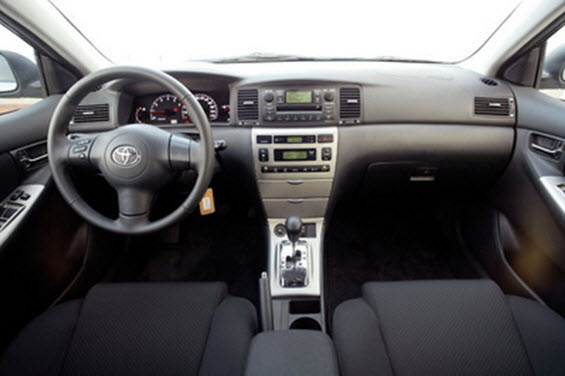 Replacing a failed catalyst will not be cheap, so it would be good to know in advance what problems there are with it, and how things stand with them on the spare parts market.
Replacing a failed catalyst will not be cheap, so it would be good to know in advance what problems there are with it, and how things stand with them on the spare parts market.
Until recently, we only knew the following about the catalyst: it is a thing that is not clear why it is needed, it is not clear how it works, that our gasoline “kills” it, in general - nothing but troubles.
Cut - and no problem! But gradually we began to get used to the fact that the catalyst is still a useful thing, at least the thoughts of “surgical intervention” in the exhaust system are visited less and less often by fewer and fewer people.
In the spring, when traffic police officers begin the “fight for clean air,” another problem falls on us - we need to regulate the CO. Owners of cars equipped with catalysts don’t even think about it, and they pass CO checkpoints without trembling knees or fear for their wallet.
True, the same wallet can “lose a lot of weight” for another reason. Fines for exceeding CO levels will seem peanuts compared to the costs of purchasing and replacing a catalyst if it fails. Therefore, it is not at all harmful to know how to handle it, but to do this you need to first understand how it works and how it works.
How do they work?
When the working mixture is burned, a number of combustion products harmful to human health are formed, in particular, carbon monoxide (CO), various hydrocarbons (CH) and nitrogen oxides (NO). Although these substances make up only 1% of the total exhaust (the rest is nitrogen, carbon dioxide and water vapor), they are very harmful and require neutralization.
There are several ways to combat harmful emissions - such as leaning the engine mixture or exhaust recirculation - but none of them are as effective as a catalytic converter.
When the working mixture is burned, a number of combustion products harmful to human health are formed, in particular, carbon monoxide (CO), various hydrocarbons (CH) and nitrogen oxides (NO). Although these substances make up only 1% of the total exhaust (the rest is nitrogen, carbon dioxide and water vapor), they are very harmful and require neutralization.
There are several ways to combat harmful emissions - such as leaning the engine mixture or exhaust recirculation - but none of them are as effective as a catalytic converter.
As experts say, a catalytic converter is a simple device in which a complex chemical process occurs. “Inside the stainless steel case there is a ceramic or metal “brick” that has a honeycomb structure. This monolith has a huge surface area, and all of it is covered with a thin layer of a special alloy - the catalyst itself, containing platinum, rhodium and palladium.
It is these precious metals that are responsible for the wonderful properties of the catalyst, and they also determine its high cost.” Exhaust gases “wash” the surface of the monolith, and when the temperature reaches a “critical” value of 270° C, the catalytic reaction begins.
Carbon monoxide is converted to dioxide (carbon dioxide), hydrocarbons are converted to water and again carbon dioxide, and oxides of nitrogen are converted to water and nitrogen. All this is less harmful to the environment. Catalytic converters can quite effectively reduce exhaust toxicity, while they do not affect fuel consumption and engine power.
In the presence of a catalyst, the exhaust back pressure slightly increases, causing the engine to lose 2–3 hp, but this is practically the entire “payment” for cleaning the exhaust. However, installing a catalytic converter is not an ideal solution. Theoretically, it should serve indefinitely, since the above-mentioned precious metals serve only as a catalyst, which, as is known, is not consumed during a chemical reaction. In practice, the life of a catalyst has its limit...
What is destroying them?
Catalytic converter failure can occur for several reasons, although it is usually a gradual process that cannot be detected without special equipment.
The “core” of most catalysts is made of ceramic, a material known to be brittle. A car can hit a pothole at speed, hit something, or even just “strike” the catalytic converter housing against a stone, and this can cause the catalytic “brick” to crack. After this, the loss of its working qualities by the “core” is a matter of time.
New generation converters containing a metal monolith are not so vulnerable in this regard. Of course, it is possible to break them, but, in any case, not so easy.
Enemies of the catalyst
In addition to physical destruction, there is another common reason for catalyst failure. Fuel. It is extremely sensitive to the composition of the fuel.
If the gasoline is leaded, then the lead tetraethyl contained in it is deposited on the active surface of the catalytic “brick” and quickly “salts” it, causing all reactions to stop.
It seems that at gas stations they started putting hose tips of different sizes, and they paint dispensers in different colors, and they write about it on every corner, but still consumers sometimes get confused and fill in the wrong gasoline. But it is enough to “burn” half a tank of such gasoline, and the catalyst will die irrevocably.
But not only leaded gasoline is the enemy of the catalyst. The unleaded catalyst can also be destroyed if the engine management system is faulty, the mixture does not burn completely, or the engine is severely worn out.
Triple catalytic converters (“triple” because the catalyst is a combination of three precious metals) are installed only on those cars whose engines are equipped with a closed emission control system.
An oxygen sensor is installed in front of the catalyst, which monitors the composition of the exhaust and transmits this data to the central processor. Depending on the oxygen content in the exhaust, the ECU regulates the composition of the combustible mixture and ignition so that their optimal values are maintained.
This serves as the main protection for the catalyst, and also ensures fuel economy and engine efficiency. The catalyst does not tolerate large deviations in the composition of the working mixture. A poorly adjusted engine with a high content of hydrocarbons in the exhaust simply ruins the catalyst.
If the mixture is too lean, this can cause a sharp overheating of the catalyst, which will cause the monolith to suffer again, only this time “physically.” Thus, the “life” of the catalyst depends on the health of the engine control system.
Much depends on the serviceability of the oxygen sensor itself. With age, it becomes “lazy” or completely fails, which affects the composition of the mixture and, accordingly, the serviceability of the catalyst.
The exhaust from a heavily worn engine burning oil can also damage the catalyst. It gets into the catalyst along with the exhaust, “baked” on the surface of the monolith, like varnish, and prevents the catalyst from working.
There are other harmful factors. For example - candles. Unsuitable plugs will not achieve complete combustion, which can cause a destructive meltdown reaction in the catalyst.”
Be very careful when using gasoline or oil additives. Most people don’t think about this, but additives can also have a harmful effect on the catalyst. If the product doesn't say "catalytic converter compatible," don't risk it.
Another dangerous case is starting the engine by towing. In this case, simply pure gasoline may enter the catalyst.
This, firstly, poisons the catalyst, but can also cause an immediate reaction and even an explosion. Also watch where you are going - try not to get into deep puddles.
The operating temperature of the catalyst is about 900° C. Its sudden release into water can be fatal.
In general, it has been observed that the service life of the catalyst is influenced by operating conditions. Catalysts on cars operated in urban environments, when the engine is often started, suffer more. On the other hand, during prolonged high-speed driving on highways, the catalyst also deteriorates due to overheating.”
Finally, you would be wise to inspect your entire exhaust system regularly. If the brackets are broken or the rubber hangers fall off, the exhaust pipe will vibrate, transferring unnecessary stress to the catalyst.
Source: http://automn.ru/toyota-corolla/toyota-22784-10.m_id-2448.m_id2-2489.html
Inexpensive replacement of the catalyst with a flame arrester for Toyota Corolla
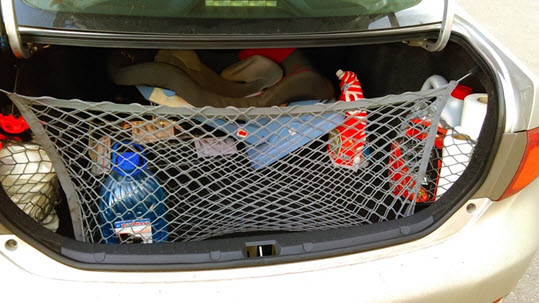
PRICES
ServicePricePromotional price*| Diagnostics | For free | For free |
| Replacing the catalyst with a flame arrester | from 4,000 rub. | from 3,500 rub. |
SIGN UP
Our centers on the city map
Do you want to inexpensively replace the catalyst with a Toyota Corolla flame arrester? “MSK Muffler” – urgent replacement of catalytic converters for Toyota Corolla with a 1-year warranty.
What is a catalytic converter
The exhaust system catalyst is the most expensive part of the muffler, the main function of which is to clean the exhaust gases from harmful impurities. The average service life of these components is approximately 120-150 thousand kilometers. The design of the catalyst consists of ceramic or metal “honeycombs” that act as a reusable filter.
Signs of a broken Toyota Corolla catalyst
- difficulty starting the engine, and in more serious cases, the inability to start the engine;
- noticeable loss of power from the power plant;
- increased fuel consumption;
- Check Engine Light Signal
The main reason for premature failure of the catalytic converter is the low quality of the fuel used. The proposed price of a catalyst for imported cars starts from 30 thousand rubles.
Therefore, experts often suggest replacing the catalyst with a cheaper flame arrester. For diagnostics, the catalyst must be dismantled - there is no other way to accurately determine the integrity of this part. Methods such as checking the level of emissions of harmful substances and measuring the pressure at the outlet do not always allow accurate conclusions to be drawn.
Installing a flame arrester - advantages and disadvantages
A flame arrester is an analogue of a resonator, the main task of which is to reduce the noise level and temperature of the exhaust gases. The advantages of flame arresters can be listed as follows:
- relatively low cost;
- lack of response to low-quality fuel;
- a slight increase in engine power compared to a running catalyst;
Installing a flame arrester is characterized by the following disadvantages:
- lack of exhaust gas cleaning function;
- increased load on subsequent parts of the exhaust system
In order for this operation to be successful, we recommend that you purchase branded flame arresters, which are characterized by high operating efficiency and a long service life.
Our specialists will definitely advise you on the optimal models, and if necessary, the required part will be quickly delivered to the repair station. To find out how much it costs to replace a catalyst with a flame arrester, call our car service center at the phone number listed on this website.
Payment Methods
We accept:
- - Cash.
- – Credit cards (there is a terminal).
- – Cashless payments for organizations.
Guarantees
We are confident in the quality of repairs: experienced mechanics will quickly and efficiently repair the exhaust system. The warranty period for work is 12 months. And the best evidence of the quality of repairs are reviews and recommendations from car enthusiasts. We are recommended to friends!
Source: http://www.remont-glushitelja.ru/remont/toyota_corolla/zamena-katalizatora-na-plamegasitel/


